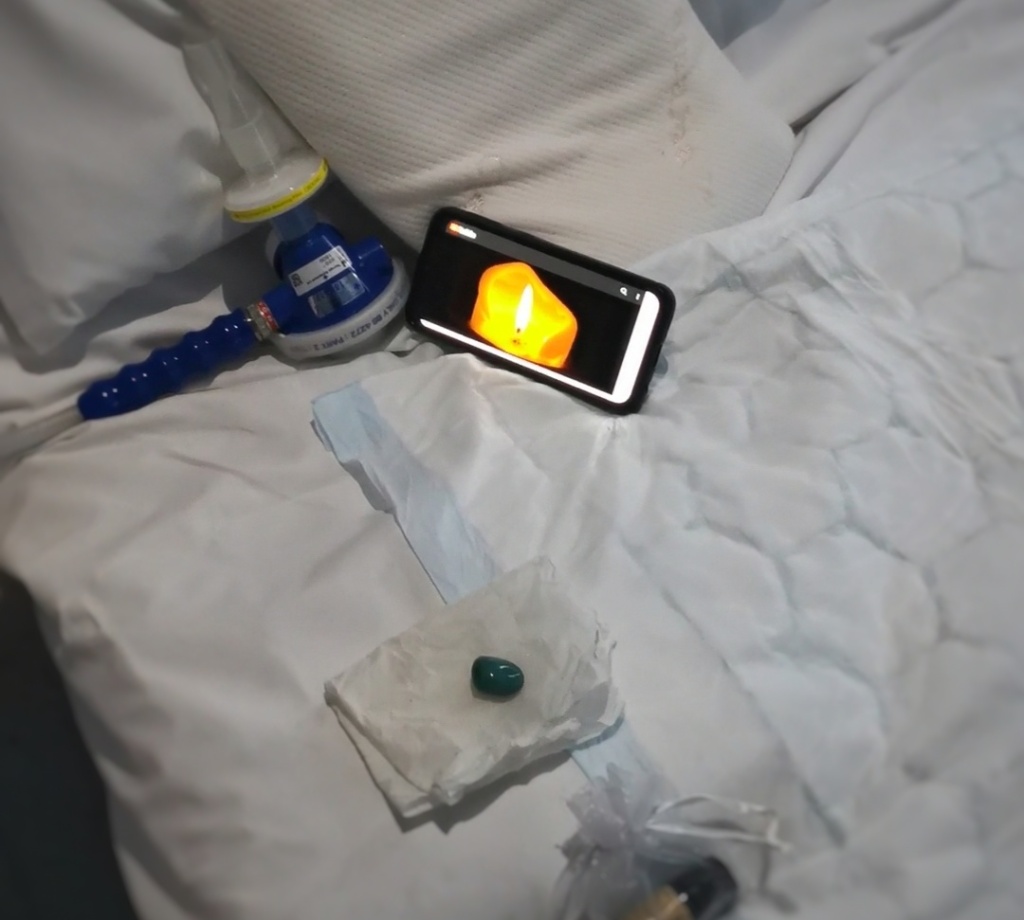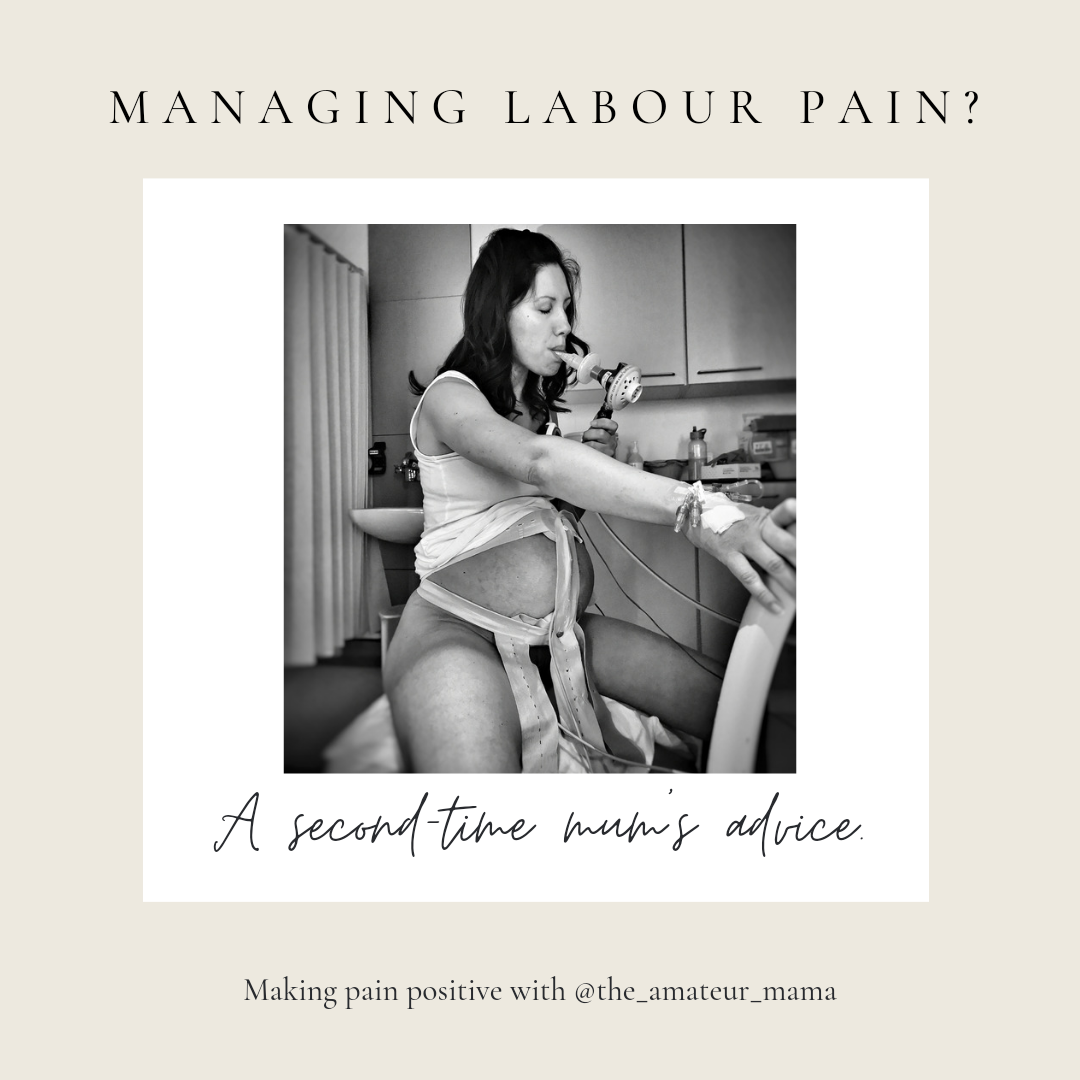The birth of my second baby may not have been the smoothest ride (I ended up having an emergency caesarean; an article on that coming soon) but what I would say is that my ability to manage the pain of a fifteen hour labour on a regular labour ward improved exponentially between my first and second baby. Being someone who would shy away from any notion of any “birth plan”, and who found literature on preparing for birth and the plethora of choices facing birthing mothers completely overwhelming, I entered my first labour experience almost completely clueless, and although it went well overall, there was a lot I could have done better to manage —and even embrace— the pain.
You see, pain doesn’t have to be a bad thing. Years before I had children, I had gallstones, and anyone who has had them can vouch for the extreme, acute pain that they give you when you’re having an attack. It’s doubled-over, writhing on the floor, screaming in agony type pain. I ended up having several attacks before I was finally given an operation to remove my gallbladder, and with each one, I became better equipped to deal with the pain. And when I say ‘deal with the pain’ I don’t mean kill it. I mean sinking into some form of primitive, animalistic acceptance of the inevitability of pain, and roaring, groaning and breathing your way through it.
It sounds a bit ‘woo-woo’, but the prolonged, extreme pain I experienced during my gallstone attacks brought me closer than I had ever been to really feeling alive. All-consuming corporeal pain has the power to strip you completely of all the layers of human existence you thought were real and bring you right back to earth as the panting, sweating, grunting animal you really are. And because you’re so completely consumed with the physical reality that your body is getting an absolute battering, you don’t care that all those layers have been stripped back. The part of you that feels anxiety, embarrassment, guilt or fear is turned off, while the part of you that draws on generations of primaeval instinct to cope with the present is turned on. It’s raw, but it’s real.
It’s for this reason that I decided against an epidural to mask the pain of childbirth, and opted instead for a combination of Gas & Air and complimentary coping strategies. This is not to say that I have any judgement against those who do chose to go down epidural route! Every birth experience is different, and I can not for one second begin to judge how or why another person made the choice that they did. Like my first, I was induced for my second baby too, so if you’ve always thought that only ‘natural’ births can be empowering, consider that just because you have a medicated labour in a hospital setting (rather than a birthing pool, for example), it doesn’t mean you can’t be in control of how you handle the pain. As with my first baby, I didn’t have a ‘birth plan’ for my second, but there were a few little things I had in my armoury to help me to boss the experience. I hope they help you to too:
1. Bring a yoga ball to the hospital:
As well as being a comfy place to sit when you’re 40+ weeks pregnant, I found my yoga ball invaluable during labour and I would urge you to invest in one now! The upright sitting position it gave me, with my legs open outwards, my back straight and the pressure taken off my pelvis, made a HUGE difference to my pain levels versus lying down. Each time a contraction struck, as well as taking in Gas & Air and turning up my TENS machine, I would rock and rotate my pelvis on the yoga ball, pushing my bottom into it and gyrating until the pain passed.
Yoga balls are also supposed to be good in the weeks leading up to birth too, preparing your pelvis and helping to move the baby into the optimum position for delivery. I can’t vouch for whether or not that is true, but it is certainly comfortable when you reach the ‘waddling whale’ stage, so any any added benefits are a bonus!

2. Use the Gas and Air…properly!!
With my first baby, I suffered more than I needed to, purely because I couldn’t get a handle on how to use the Gas and Air (Entonox) properly. It’s the most readily available and side-effect-free pain relief available to you, so make sure you take full advantage! Having used it properly with my second baby, I can tell you, it bloody well takes the edge off, and it can even make you feel quite merry, so it’s well worth it, especially if you’re feeling a bit hard done by for having to give up drinking for 9 months (and more if you are planning to breastfeed!).
During labour with my first baby, I wasn’t breathing into the mouthpiece properly, so I was sucking in normal air rather than the drugs and wasn’t really benefitting from their pain-killing effects. With my second baby, there was no messing around, I knew what I had to do. Here’s what:
- As soon as you get set up with your labour bed and they give you your gas and air, take in some of that good stuff even before your next contractions come on, so that you’ve got some of that painkilling magic in your system before the next wave. This is especially important if you don’t know when your next contraction is coming, because Entonox takes about 20 seconds to work, so it’s good to have it swimming round your system at the ready. I had a mouthpiece with both births (rather than a mask) and you need to put the mouthpiece right into your mouth and inside both cheeks, close your lips and teeth around it to create a seal and then breath deeply and slowly through it, drawing your breath right through the whole thing. The mistake I was making during my son’s labour was that I was taking little sips of the Gas and Air, rather than using it as my sole source of oxygen -which is really the only way you’ll get the full benefit.
- Once you’ve breathed in as deeply as you can, don’t take the mouthpiece out to exhale; instead, breath out fully through the mouthpiece and then inhale again. It’s the same as scubadiving and breathing through a regulator, if you’ve ever done that, in that you breath in and out through your mouthpiece.
- Once you’ve got a good few deep lungfulls of Gas and Air in your system, you can ease off it for a bit until you feel your next contraction on its way. As soon as you become aware that another contraction is coming (either from the physical sensation, or from the ECG machine), get that mouthpiece back in there and take in long, slow, deep drags through the mouthpiece.
- When you breath out through the mouthpiece, you can also groan, moan, shout or scream through it on the outbreath too, without having to take it out of your mouth. This helps to ‘breath out’ the pain by vocalising it.

3. Get a TENS machine (and read up how to use it):
I was lucky enough to borrow a TENS (Transcutaneous Electrical Nerve Stimulation) machine from a friend for both of my births, but they’re not that expensive if you have to buy one; about £40 new and considerably cheaper 2nd hand. Not as scary as its full name suggests, a TENS machine works by putting some adhesive-backed electrical pads on your lower back and controlling the degree of electricity passing through them with a handheld device. Drug-free, the electrical impulses it sends into your muscles are surprisingly effective at helping to take the edge of the pain of contractions, plus, like the Gas and Air, you can control it yourself.
TENS machines aren’t hard to use, but I do recommend you read the instructions before you go into labour, and even test it out at home in the run up to birth if you can because, once you’re in the labour ward and desperate for some pain relief, you want to be able to just slap it on and get going.
The way I used it was to get a low current going as soon as my partner had helped me get the sticky pads into position on my lower back. I kept the handset next to me so that when the contractions came, I could ramp up the electricity easily in time for the peak of the pain. Combined with rotating my hips on the yoga ball and inhaling Gas & Air, the TENS machine really did help me manage the pain.

4. Darken the room:
I hadn’t heard of this at all when I had my first baby, but during the week-long wait in hospital for my daughter to arrive, a friend suggested that I darken my room and make it as ‘cave-like’ as possible in order to help labour along, because apparently, this taps into the primaeval part of our brain where oxytocin and endorphins are produced. Darkening the room, removing sources of stimulation such as TVs, radios, clocks etc, and making it as cosy as possible with cushions, rugs and throws, helps to calm and relax you, helping your body produce more oxytocin, which in turn helps your uterus contract strongly and regularly.
As soon as I got into the labour room, I asked my partner to draw all the blinds and turn off the lights, and although somewhat bemused at this request, he obliged. Straight away I felt the difference without the harsh medical strobe lighting, so this is something I would definitely do again for my next birth.
5. Bring some battery operated ‘candles’ and a fur blanket:
Related to darkening the room, and in the spirit of creating that all-important ‘cave’ like environment, battery-operated ‘candles’ would have been a really welcome addition to my labour environment had I had the foresight to bring some. You can get some really good ones these days that look just like a real flame. Basically, while I was labouring with my daughter, I was surprised to note that I craved a warm, dark cave environment with a fire, burning candles and lots of animal furs. In the absence of any candles fake or otherwise, I used my phone to bring up a YouTube video of a flickering candle, and actually, it was the next best thing. I suppose what it did was relax me, and give me something to zone out to in the way that only a flickering candle can.
For my next birth, I will order or borrow some pretend candles to position around me in the room, and will also bring a furry blanket as well, to give me that cave-like feeling my primitive brain so craves during this most primaeval of acts.

6. Watch comedy:
It was totally unplanned, but a few hours into my labour, I suddenly requested that my partner get some “Live at the Apollo” clips up on his phone and let me watch some stand-up while I experienced my contractions. God knows what made me think of it, but it really helped! I hardly ever watch comedy normally, but something in my brain decided that Micky Flanagan, Lee Evans and John Bishop were what I needed, and they was the perfect tonic! As the contractions would come on, I would turn up the volume on the video and laugh my way through the pain. It seemed to be the comics with a tendency towards more physical comedy that really got me laughing while I was in labour, so next time I will be finding some clips and downloading them ahead of time in order to play them in the labour room.

7. Have some Oreos at the ready:
Again, something I almost never eat normally, my partner happened to have a packet of Oreos he’d bought from the vending machine in the hospital, and when I spotted them, I decided they were just what I needed. And indeed they did help! Perhaps my tastebuds were on high alert due to the pain, because they tasted absolutely amazing, and gave me relief that went far beyond just a sweet treat. I didn’t eat them normally either, for some reason I broke each Oreo biscuit up into about five tiny pieces and laid them on the bed in front of me, and as each contraction came on, I would suck on one tiny piece until the pain subsided.

So that’s it. Just a few tips that I hope will empower you to take your labour by the horns and boss that pain like the warrior you are. I’d love to know your thoughts on this and what strategies you employed (or plan to employ) for your labour, so leave your comments below!
You can follow me on Instagram @the_amateur_mama Thanks for reading!
